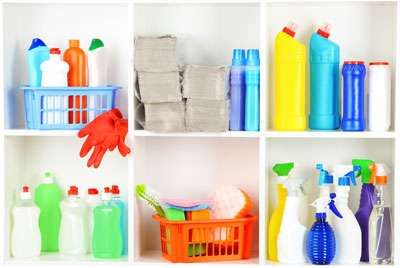Are Allergies Hereditary?
Are allergies hereditary? Spoiler alert: yes. Plot twist: but it’s not that simple. Allergies are the sixth most common chronic illness in the US, affecting...
Posted on May 16, 2017
Allergies When seasonal allergies bring on sneezing, coughing and nasal congestion you may be tempted to stay inside to avoid pollen and blooming flowers. However, that may not be the only thing that is aggravating your allergies. Did you know that the environment indoors may actually be worse for your allergies than the environment outside your door?
When seasonal allergies bring on sneezing, coughing and nasal congestion you may be tempted to stay inside to avoid pollen and blooming flowers. However, that may not be the only thing that is aggravating your allergies. Did you know that the environment indoors may actually be worse for your allergies than the environment outside your door?
The Environmental Protection Agency (EPA) recently stated that a growing body of scientific evidence indicates that “air within homes and other buildings can be more seriously polluted than the outdoor air in even the largest and most industrialized cities.” That is troubling because according to the EPA, people in the United States spend “approximately 90 percent of their time indoors.”
Symptoms of harmful or bad indoor air quality
The most common reason that indoor air becomes polluted is lack of proper ventilation. As homes are built to prevent heat and air conditioning loss, they also prevent the exchange of air that pulls toxins out and brings clean air in. The result: pollutants are trapped inside the house. How can you tell if your indoor air quality is poor or harmful? These clues may help:
The Top 10 pollutants that cause indoor allergies
Additional pollutants that can lead to indoor allergies include:
How do you know if you are allergic to the air inside your home?
Generally speaking, people who are most vulnerable to illness are most likely to be allergic to the air in the home like infants, small children and the elderly. The signs and symptoms of being allergic to indoor air can be similar to other allergies:
Indoor allergens, such as dust, mold, pet dander, and cockroaches can also worsen or even trigger asthma or chronic obstructive pulmonary disease (i.e., Nitrogen dioxide).
Sometimes it can be difficult to discern if allergic reactions are from outdoor pollen or indoor toxins. The EPA has a good rule of thumb to follow to figure that out. “Pay attention to the time and place the symptoms occur. If the symptoms fade or go away when you are away from the home and then return when you arrive home, then an effort should be made to identify indoor air sources…of the allergic reaction.”
What can you do to clean the air in your home?
The importance of seeing an allergist
It is estimated that 10-30% of adults and 30-60 million individuals in the US are affected by the symptoms of allergies each year.(inside page link, see below) If you are not sure whether your allergies are caused by polluted indoor air or outdoor pollens, or if you have chronic allergy symptoms, see an ENT. They are the experts who can diagnose the source of your allergies and determine the best treatment for them. There are many effective treatments ranging from nasal sprays and medication to minimally invasive surgery.
References
University of Rochester Medical Center: Indoor Air Can Cause Health Problems
EPA: Indoor Air Quality
EPA: The Inside Story: A Guide to Indoor Air Quality
Are allergies hereditary? Spoiler alert: yes. Plot twist: but it’s not that simple. Allergies are the sixth most common chronic illness in the US, affecting...
Our immune system: vital, complex, and wonderful – except for when it goes rogue. Allergies occur when your immune system has a consistent over-the-top...
An allergist is a medical doctor who has specialized in the field of managing allergies and allergic diseases, including asthma. Once having obtained a...
Summer: great for the sun, not so much for the pollen. If you live in Pennsylvania, summer is the season where the sweet and...